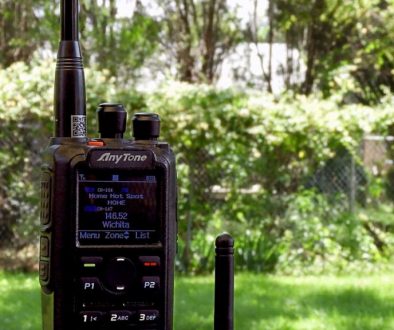Band Plan
Hams operate within authorized frequency ranges; authorized bands may vary by the class of the station license. Globally, the International Telecommunication Union (ITU) oversees how much radio spectrum is set aside for amateur radio transmissions and Amateur radio frequency allocation is done by national telecommunications authorities. ARRL has provided a helpful band plan chart that makes it easier to identify these frequency allocations.

With the Technician license you are pretty much limited to either the 2M or 70cm bands. These bands are considered “line of sight” or simplex. When using simplex, both your station’s antenna height, power output, type of antenna, other factors and terrain between both stations will have a great deal to to with how strong the signals are on your radio and how they would hear you if at all. For all practical purposes the VHF 2M and UHF 70cm will be used for local communications and regional when using repeaters in your area. These frequencies will be critical during times of emergency. The national calling frequency for VHF is 146.520 Mhz; for UHF is 446.000 Mhz. My experience has been there is very little activity on the 70cm UHF band, so you really only need a single band 2M VHF radio. Oh yeah, it’s nice to have access to more frequencies, but you probably won’t be using them very often.
With the General class license the world of HF opens to you. These frequencies will require a different class radio along with more advanced antennas and accessories. It also makes available to you communication with stations located throughout the world. Now, for finding those stations, it can be a challenge. Your antenna and understanding signal propagation is crucial in international ‘DX’ communication. And, the band you’re using makes a difference.
 My experience has been that most of my voice DX contacts have been made in the 20 meter band between 14.225-14.350 MHz and FT8 digital contacts at 14.074 MHz. This band seems open pretty much all day and is said to be best when the sunspot cycle is peaking. This band is not likely to be effective for short-range contacts with ground wave signals reaching only about 50-75 miles. Numerous nets can be found here on 20 meters.
My experience has been that most of my voice DX contacts have been made in the 20 meter band between 14.225-14.350 MHz and FT8 digital contacts at 14.074 MHz. This band seems open pretty much all day and is said to be best when the sunspot cycle is peaking. This band is not likely to be effective for short-range contacts with ground wave signals reaching only about 50-75 miles. Numerous nets can be found here on 20 meters.
 Another active band for me has been 40 meters between 7.175-7.300 MHz. for voice contacts and 7.074 MHz for FT8 digital contacts. Like 20M, this band seems open pretty much throughout the day with winter daytime distances of 500 miles or more and at night longer range DX is possible. During the summer daytime distances of 300-400 miles and night time distances up to 1000 miles are likely. Many nets can be found on 40 meters both day and night. This can be a good QRP band, too. Stations with less than 5 watts output work the entire planet here.
Another active band for me has been 40 meters between 7.175-7.300 MHz. for voice contacts and 7.074 MHz for FT8 digital contacts. Like 20M, this band seems open pretty much throughout the day with winter daytime distances of 500 miles or more and at night longer range DX is possible. During the summer daytime distances of 300-400 miles and night time distances up to 1000 miles are likely. Many nets can be found on 40 meters both day and night. This can be a good QRP band, too. Stations with less than 5 watts output work the entire planet here.
 I haven’t found 80 meters to be very good for DX but can be jam packed with QSO’s of hams closer to you. There doesn’t seem to be much variation in the band with the sunspot cycle but can be quite noisy in the summer with static. This band is used for a lot of “local” rag chewing, regular net’s and message handling.
I haven’t found 80 meters to be very good for DX but can be jam packed with QSO’s of hams closer to you. There doesn’t seem to be much variation in the band with the sunspot cycle but can be quite noisy in the summer with static. This band is used for a lot of “local” rag chewing, regular net’s and message handling.


